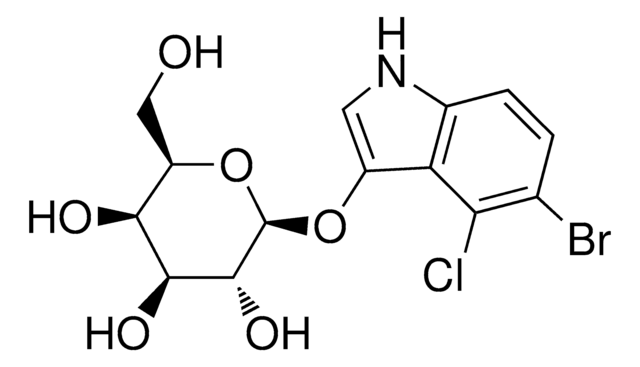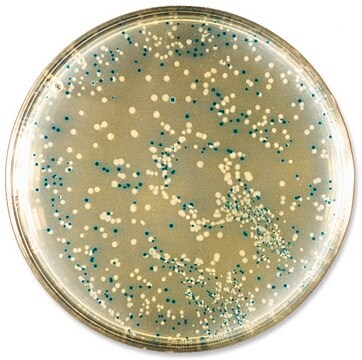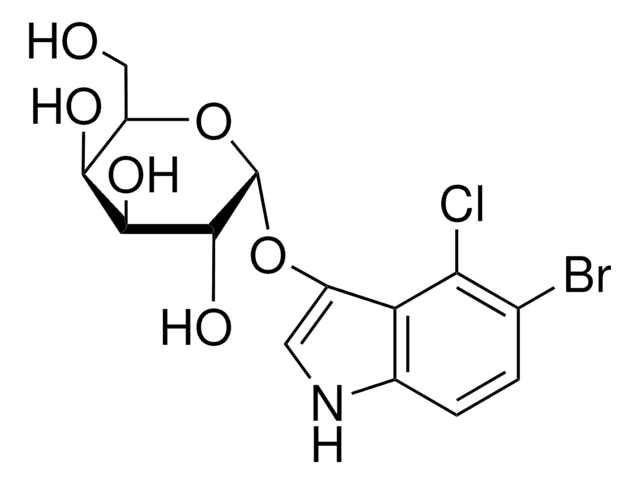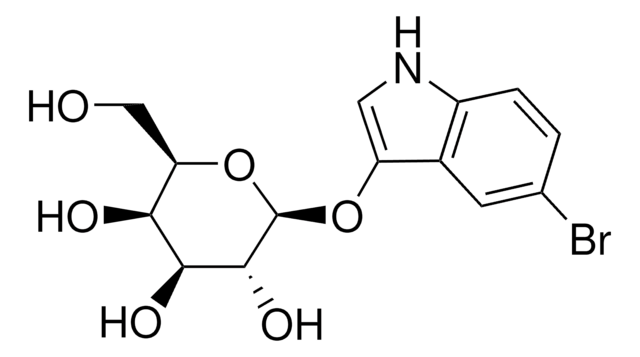B6024
5-Bromo-4-chloro-3-indolyl β-D-galactopyranoside
tablet, suitable for identification of lac+ bacterial colonies
Sinônimo(s):
5-Bromo-4-chloro-3-indolyl β-D-galactoside, BCIG, X-Gal
About This Item
Produtos recomendados
product name
5-Bromo-4-chloro-3-indolyl β-D-galactopyranoside, tablet
forma
tablet
Nível de qualidade
adequação
suitable for identification of lac+ bacterial colonies
temperatura de armazenamento
−20°C
cadeia de caracteres SMILES
OC[C@H]1O[C@@H](Oc2c[nH]c3ccc(Br)c(Cl)c23)[C@H](O)[C@@H](O)[C@H]1O
InChI
1S/C14H15BrClNO6/c15-5-1-2-6-9(10(5)16)7(3-17-6)22-14-13(21)12(20)11(19)8(4-18)23-14/h1-3,8,11-14,17-21H,4H2/t8-,11+,12+,13-,14-/m1/s1
chave InChI
OPIFSICVWOWJMJ-AEOCFKNESA-N
Procurando produtos similares? Visita Guia de comparação de produtos
Categorias relacionadas
Descrição geral
Aplicação
Ações bioquímicas/fisiológicas
Quantidade
Reconstituição
produto relacionado
Código de classe de armazenamento
11 - Combustible Solids
Classe de risco de água (WGK)
WGK 3
Ponto de fulgor (°F)
Not applicable
Ponto de fulgor (°C)
Not applicable
Equipamento de proteção individual
Eyeshields, Gloves, type N95 (US)
Certificados de análise (COA)
Busque Certificados de análise (COA) digitando o Número do Lote do produto. Os números de lote e remessa podem ser encontrados no rótulo de um produto após a palavra “Lot” ou “Batch”.
Já possui este produto?
Encontre a documentação dos produtos que você adquiriu recentemente na biblioteca de documentos.
Os clientes também visualizaram
Nossa equipe de cientistas tem experiência em todas as áreas de pesquisa, incluindo Life Sciences, ciência de materiais, síntese química, cromatografia, química analítica e muitas outras.
Entre em contato com a assistência técnica




